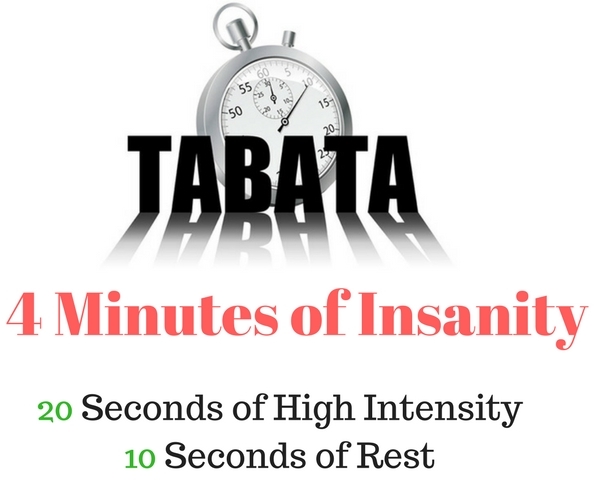
Our society has undergone significant changes in just a generation or two. The way we lead our lives today places a higher emphasis on physical fitness and staying in shape. We acknowledge that, in the midst of our fast-paced lifestyles, this isn’t always easy to achieve. That’s where Tabata Workouts and Tabata Training come into the picture.
I have vivid memories of my childhood, spending time at my grandparents’ house. My grandfather worked in the trades, and my grandmother cleaned houses. Remarkably, they were both in excellent shape without ever adhering to a formal workout routine. In those days, you didn’t necessarily have to exercise to stay fit. It may not have been the trendy thing to do, but people weren’t leading the sedentary lives we often do today. Furthermore, the food options available back then were quite different from the choices we have today.
Instead of engaging in activities that kept us on our feet all day, many of us find ourselves sitting in front of a computer, TV, in cubicles, or at coffee shops. Coupled with the abundance of calorie-rich foods available today, it’s easier than ever to consume excess calories.
We all have our motivations for wanting to stay in shape. Some of us desire to keep up with our children, while others aim to achieve a desirable appearance or better overall health, among many other reasons. Regardless of your specific goals, there are days when we struggle to find the time or when we simply want to shake up our fitness routine. That’s precisely where Tabata comes into play.
What is Tabata Workouts
Tabata Workouts are a form of High Intensity Interval Training (HIIT), which involves brief bursts of high-intensity exercise followed by short periods of rest. The underlying concept is to challenge both your physical and mental limits.
In a Tabata routine, you engage in intense exercise for 20 seconds, followed by a 10-second rest period. While this might sound manageable on paper, it’s anything but. Despite the total workout time being only 4 minutes (with eight cycles of 20 seconds on and 10 seconds off), it’s incredibly intense and guaranteed to push your limits. Be prepared for a challenging experience.
Here is the breakdown for Tabata Workouts
- Workout hard for 20 Seconds
- Rest for 10 Seconds
- Complete for 8 rounds

Background on Tabata Workouts
Tabata derives its name from the Japanese scientist Dr. Izumi Tabata, who conducted a study involving two groups of speed skater athletes.
The study involved:
Type of Training: Both groups trained on ergonomic cycles.
Group 1: This group followed a moderate-intensity training regimen, working out five days a week for six weeks, with each session lasting an hour.
Group 2: Group 2, on the other hand, adopted a high-intensity approach. They trained four days a week for six weeks, with each workout session lasting just four minutes and 20 seconds.
Weekly Difference: Notably, Group 1 worked out an additional day per week, accumulating around 282 more minutes of exercise in total.
Results: As expected, Group 1 saw improvements in their aerobic or cardiovascular systems but didn’t experience any significant muscular system changes. In contrast, Group 2 demonstrated a more substantial enhancement in their cardiovascular system and a notable 28% increase in their muscular system.
Bottom Line: Tabata offers a unique approach where you can achieve improvements in both your cardiovascular and muscular systems while investing less time in your workouts. The Tabata guideline is straightforward: 20 seconds of high-intensity training followed by 10 seconds of rest, repeated eight times during your workout.
When Should I use a Tabata Workout
Before embarking on the Tabata workout or any other exercise regimen, it’s crucial to seek guidance from your healthcare professional. Ensuring your body is suitable for this type of workout is of paramount importance.
Preparation and Timing:
- Plan your Tabata workout to ensure you use your time effectively. Adequate rest the night before is essential for peak performance. Staying well-hydrated is also vital, as dehydration can hinder your ability to perform at your best.
Choosing the Timing: The choice of when to incorporate a Tabata workout largely depends on your personal schedule and preferences. For some, mornings are the preferred workout time. Here’s when I personally integrate Tabata Workouts into my routine:
- When I’m running late and can’t commit to a full workout session.
- When I seek a change from my usual workout routine to combat boredom.
- When I have an abundance of energy and want an intense workout.
- Occasionally, I integrate it after a run, particularly if I’ve only completed a short two-mile run. In this case, I set a timer, running intensely for 20 seconds and walking for 10 seconds. My goal is to complete all 8 rounds, though reaching the third round can be quite challenging. Nonetheless, it adds an extra layer to my running routine.
Of course, your schedule and preferences may differ. If you decide to incorporate the Tabata workout into your routine, I recommend aiming for 3 to 4 sessions per week.
I want to emphasize that I’m not a fitness expert but rather an individual like yourself, striving to stay in shape despite time constraints. You can explore the internet for a variety of Tabata workouts and helpful tips to suit your fitness journey.

Example of Tabata Workouts
Within the Tabata workout, there are two primary types of exercises you can engage in: the repetitive workout and the varied workout.
Repetitive Workout: In a repetitive workout, you perform all 8 rounds using the same exercise. For example, if you choose sit-ups, that exercise will be the sole focus for all 8 rounds. You’ll give it your all, doing sit-ups for 20 seconds, followed by a 10-second rest, and then continuing with sit-ups for the next 20 seconds. This sequence repeats until the workout is completed.
Varied Workout: On the other hand, in a varied workout, each of the 8 rounds features a different exercise. You might start with sit-ups in one round, then transition to squats in the next, and perhaps follow with push-ups in another.
The benefit of a varied workout is that it engages a wide range of muscle groups, providing a comprehensive fitness experience.
I personally enjoy incorporating both approaches and mixing things up based on my energy levels and workout routine for the day. After running, I sometimes push my running limits further. If I’ve already had a separate workout earlier in the day and still have the energy, I’ll opt for a repetitive Tabata workout. On days when I have limited time, I go for the varied Tabata workout.
The beauty of the Tabata workout lies in its flexibility. You have the freedom to structure it as you see fit. Create a list of your favorite exercises and design your own Tabata workout to suit your preferences and goals.
Here is a great list of some killer Tabata Workout examples.
Tabata Workout Final Thoughts
I’m not suggesting this should be your sole fitness regimen. The Tabata workout is a fantastic tool for spicing up your routine when needed. Our lives are busier than ever, especially when raising children. Between getting them ready for school, shuttling them to various activities, assisting with homework, and more, our schedules can be quite demanding. In these time-crunched situations, having the Tabata workout as an option is invaluable. It allows you to stay active even on your busiest days.
